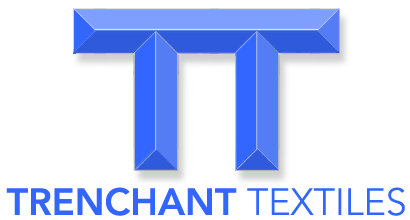INTREPID
The next big thing in waterproof breathable technology is actually really small
Introducing Intrepid waterproof-breathable fabrics from Trenchant Textiles, a new line of high-performance, air-permeable fabrics that are 100% PFC-free. Based on Celgard’s remarkable new PFC-free/VOC-free, nano-porous membrane, Intrepid fabrics leverage the innate physical and hydrophobic properties of polypropylene to offer the lightest, most breathable waterproof-breathable membrane on the market. The key to this remarkable new material are its pores. These pores are an order of magnitude smaller than those of the leading PTFE waterproof-breathable membrane and those of the two leading air-permeables. More importantly, their organic shape is ideal for creating the surface tension necessary to prevent water permeation. This is why the membrane at the core of Intrepid fabrics needs neither the fluorinated surface treatment of the leading air-permeable membrane, nor the additional PU layer of the leading PTFE membrane.
Developers of technical outerwear have long known that air-permeable membranes offer massive breathability advantages over monolithic ones. Moisture can be transported much more quickly and easily through a waterproof-breathable membrane if it doesn't have to make the phase change – condensing from vapor to water, being absorbed into the body of the membrane, being wicked through the membrane, then make the phase change back into vapor on the other side. Air-permeable membranes simply leverage diffusion and Brownian motion to vent water vapor through the membrane. This is why monolithic membranes don't really begin to transport moisture to any significant degree until the garment is already wet inside.
The problem for outdoor brands is that the leading air-permeables all come with environmental trade-offs, and in some cases, durability limitations. The most popular air-permeable membrane uses PFC chemistry for both its feed stock and its hydrophobic surface treatment. The second most popular air-permeable membrane is electro-spun from solvent-based polyurethane, which has been shown to oxidize and grow brittle, undermining its durability and waterproofness. Other micro-permeable polyurethane membranes use dimethylformamide (DMF) and are coming under pressure from environmental regulators. The Intrepid membrane uses no PFCs, solvents, or DMF, while offering best-in-class breathability and ‘killer wash’-proven durability.
Trenchant Textiles is a full-service fabric developer with its own proprietary lamination capabilities. We are located in Taiwan, a hotbed of sport textiles innovation at the geographical center of the global garment supply chain. Our team has decades of experience in technical fabric integration, and has laminated tens of millions of yards of waterproof-breathable fabric for many of the world's top outerwear brands. We're experienced with many of the new breed of PFC-free DWR treatments, each of which comes with its own lamination challenges. This experience, our in-house lamination capabilities, and our proprietary Intrepid membrane enable us to develop some of the most sustainable, highest-performing technical fabrics in the industry.




